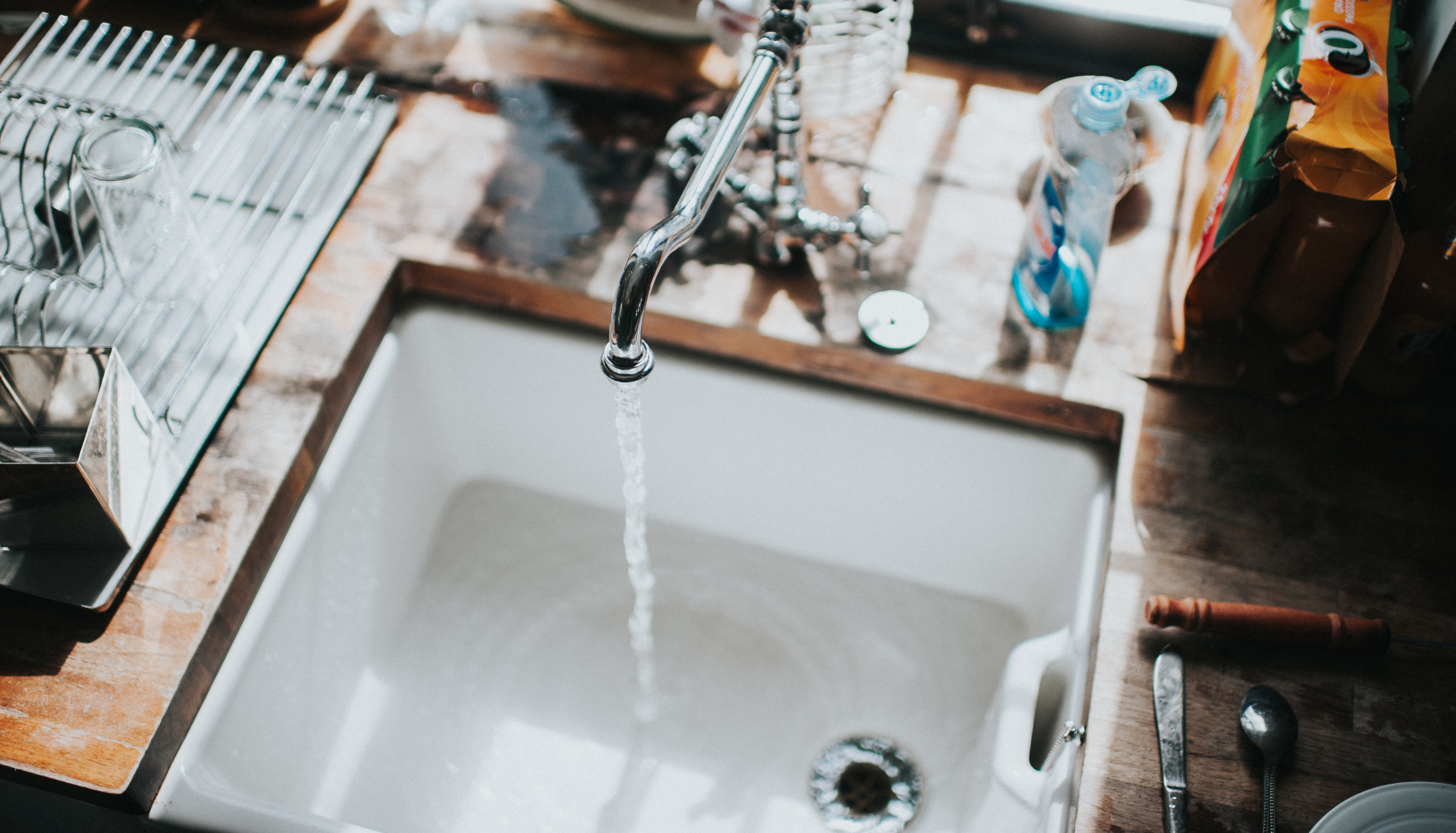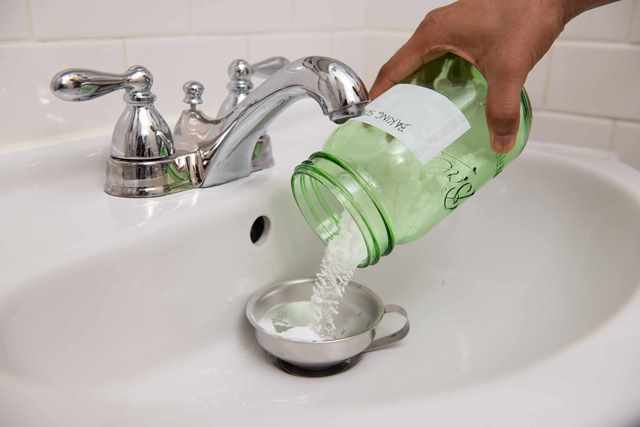Everybody has their private assumption in relation to DIY Plumbing Fixes.

Clogged kitchen sinks are one of one of the most common drainage concerns home owners deal with. And also what's more, it's a very uncomfortable and also unpleasant view. Envision mosting likely to the sink to do your recipes and also finding out that the drain is clogged and also water can not flow down quickly.
Most stopped up water drainages are triggered by food particles, fat, oil, as well as soap particles. They obstruct the sink as well as make it hard for water to go down the drain quickly. While it is alluring to put a call through to the plumbings, there are a couple of DIY hacks you can attempt first prior to making that call.
In this write-up, we will certainly be taking a look at 5 simple steps you can take to free your kitchen area sink from blockages and conserve you from the pain and humiliation of taking care of a clogged cooking area sink.
1. Usage Boiling Water
When confronted with a stopped up sink, the first thing you need to try is to put boiling water down the drainpipe. That is about the most simple remedy to blocked sinks and drains. Boiling water aids reduce the effects of the particles and also particles creating the clog, specifically if it's grease, soap, or oil fragments, and in a lot of cases, it can flush it all down, as well as your sink will be back to regular.
Do not try this technique if you have plastic pipes (PVC) due to the fact that hot water could thaw the lines as well as trigger more damages. You may desire to stick to using a bettor to obtain debris out if you use plastic pipes.
Utilizing this method, activate the faucet to see just how water flows after pouring hot water away. Attempt the process again if the clog persists. Nevertheless, the obstruction could be extra consistent in many cases as well as need greater than simply boiling water.
2. Possibly it's the Garbage Disposal
In several instances, the blockage may be due to a clog in the disposal. Usage pliers instead.
You can discover the following option to unclog your kitchen sink if this does not function.
3. Attempt a Plunger
If the issue is not from the garbage disposal, you can try utilizing a plunger. Plungers are basic residence tools for this celebration, and also they can can be found in useful if you use them appropriately. A flat-bottomed bettor is most suitable for this, but you can make do with what you have is a toilet bettor.
Adhere to the following straightforward actions to use the plunger efficiently:
Secure the drainpipe with a dustcloth as well as load the sink with some hot water
Place the bettor in position over the drain as well as begin diving
Check to see if the water runs openly after a couple of plunges
Repeat the process until the drain is cost-free
4. Sodium Bicarbonate as well as Vinegar
In contrast to making use of any kind of kind of chemicals or bleach, this approach is more secure and not damaging to you or your sink. Sodium bicarbonate and vinegar are day-to-day house items used for many other points, as well as they can do the trick to your cooking area sink.
Firstly, get rid of any type of water that is left in the sink with a mug.
Then put a great amount of baking soda down the tubes.
Pour in one cup of vinegar.
Seal the water drainage opening as well as permit it to opt for some minutes.
Pour hot water away to melt away various other stubborn residue and also particles.
Following this straightforward method might do the trick, and also you can have your kitchen sink back. Repeat the process as high as you regard necessary to clear the sink of this particles completely.
5. Make use of a Hanger
Using a wire cloth wall mount or a plumber's serpent if you have one can do the trick. All you need do is correct the alignment of the wall mount to go down the drainpipe while you thoroughly choose out the bits triggering the clog.
Run hot water down the drain after this to see exactly how effective you were.
Final Words
Trying these couple of tricks might conserve you the expenditures of having a plumber inspect it. Yet in a lot of cases, a plumber is what we need. In cases where you locate it difficult to unblock the sink even after trying all these approaches, it might be time to leave it to the specialists.
Contact specialist plumbing companies to repair your drainage issues as well as other different household plumbing requirements.
Blocked kitchen sinks are one of the most common water drainage problems homeowners face. Picture going to the sink to do your meals and also locating out that the drainpipe is blocked and water can not flow down easily.
They block the sink and also make it hard for water to go down the drainpipe quickly. When faced with a blocked sink, the very first point you should attempt is to put boiling water down the drain. Boiling water assists counteract the fragments and particles causing the blockage, especially if it's oil, soap, or oil bits, as well as in lots of cases, it can purge it all down, and also your sink will certainly be back to regular.
How to Unclog a Kitchen Sink
Take the Plunge
Start your efforts by plunging. Use a plunger with a large rubber bell and a sturdy handle. Before getting to work on the drain, clamp the drain line to the dishwasher. If you don t close the line, plunging could force dirty water into the dishwasher.
Fill the sink with several inches of water. This ensures a good seal over the drain.
If you have a double sink, plug the other drain with a wet rag or strainer.
Insert the plunger at an angle, making sure water, not air, fills the bell.
Plunge forcefully several times. Pop off the plunger.
Repeat plunging and popping several times until the water drains.Clean the Trap
The P-trap is the curved pipe under the sink. The trap arm is the straight pipe that attaches to the P-trap and runs to the drain stub-out on the wall. Grease and debris can block this section of pipe. Here s how to unclog a kitchen sink by cleaning out the trap:
Remove as much standing water from the sink as possible.
Place a bucket under the pipe to catch the water as it drains.
Unscrew the slip nuts at both ends of the P-trap. Use slip-joint pliers and work carefully to avoid damaging the pipes or fasteners.
If you find a clog, remove it. Reassemble the trap.
If the P-trap isn t clogged, remove the trap arm and look for clogs there. Run the tip of a screwdriver into the drain stub-out to fetch nearby gunk.Spin the Auger
With the trap disassembled, you re ready to crank the auger down the drain line.
Pull a 12-inch length of cable from the auger and tighten the setscrew.
Insert the auger into the drain line, easing it into the pipe.
Feed the cable into the line until you feel an obstruction. Pull out more cable if you need to.
If you come to a clog, crank and push the cable until you feel it break through. The cable will lose tension when this happens.
Crank counterclockwise to pull out the cable, catching the grime and debris with a rag as the cable retracts.

As an avid reader on Common Household Plumbing Issues, I think sharing that article post was smart. Sharing is caring. You never know, you may very well be doing someone a favor. Thanks for your time invested reading it.
Fast response, call now!